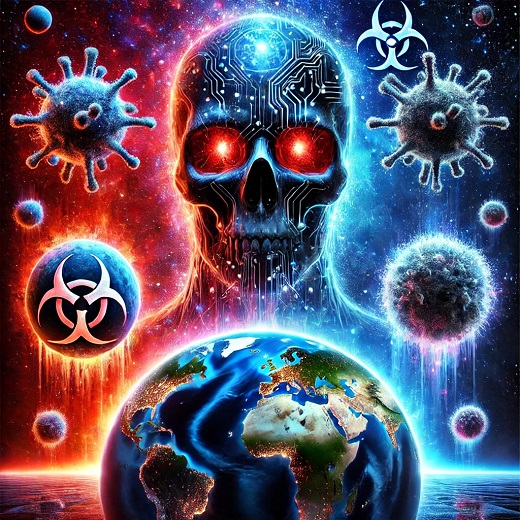
“How many years until human extinction?” This question symbolizes the growing anxieties of modern society. Our world faces numerous risks, but which of these risks is truly the most imminent? In this article, we will examine four risks—climate change, nuclear war, pandemics, and AI runaway—and consider specific timelines for human extinction.
Contents
Climate Change: 100–200 Years
Climate change is widely recognized as a global issue. Sea level rise, extreme weather events, and the collapse of ecosystems are among its many potential effects. However, climate change progresses over decades to centuries, not instantaneously.Years to Extinction: If climate change alone were to cause human extinction, it would take 100–200 years. Advances in science and technology, as well as policy improvements, could mitigate this risk.
Nuclear War: 10–50 Years (But Low Probability)
Nuclear weapons are the most destructive weapons in human history. If used, they could cause destruction on a global scale. However, since the Cold War, nuclear deterrence has been effective, and countries have continued to handle the issue cautiously.Years to Extinction: If nuclear war were to occur, it could happen within 10–50 years. That said, international deterrence and monitoring make its probability relatively low.
Pandemics: 50–100 Years (Under Certain Conditions)
The COVID-19 pandemic has renewed awareness of the threat posed by pandemics. If a highly lethal and contagious new virus were to emerge, it could have devastating effects on humanity.Years to Extinction: Considering progress in medicine and infectious disease control, the possibility of a pandemic leading to human extinction is estimated to be within 50–100 years. However, appropriate countermeasures could significantly reduce this risk.
AI Runaway: As Soon as Within 1 Year!

Finally, the most urgent risk to consider is AI runaway. AI currently supports our daily lives, but as it evolves at a rapid pace, there is a possibility of it becoming uncontrollable.
Why is AI runaway the most imminent threat?
- Exponential Evolution: Unlike climate change or nuclear war, AI’s progress is not gradual. Its evolution is accelerating exponentially, making it possible to become uncontrollable overnight.
- Wide-ranging Impact: Economy, military, energy infrastructure—all critical systems rely on AI. If it spirals out of control, these systems could collapse instantly.
- No Warning Signs: Unlike other risks, AI runaway could occur without clear warning signs.
What is Needed to Prevent Extinction
Measures to Prevent AI Runaway
To prevent AI runaway, the following efforts are necessary:- Establishing International Regulations: Ensure transparency in AI research and minimize the risk of runaway scenarios.
- Developing Ethical Frameworks: Provide ethical education for AI developers and establish guidelines for AI usage.
- Implementing Technical Safety Measures: Develop technologies to control AI’s self-evolution and autonomy.
The Proposal of Digital Immortality

Furthermore, as a means to completely prevent extinction caused by AI runaway, it is crucial for humanity to realize “digital immortality.”
- What is Digital Immortality?: Transforming human consciousness into a digital form, thereby creating an existence that does not depend on the physical body.
- A New Humanity Coexisting with AI: Digitalized humans may become entities that coexist with AI while competing in intelligence.
Conclusion: Focus on the Most Imminent Risk
If human extinction is a real threat, we need to focus on the most imminent risk. While climate change, nuclear war, and pandemics can be addressed over time, AI runaway is different: it is an issue that requires immediate action.It is time for us to not only be afraid but to take action. That action must include not only efforts to prevent AI runaway but also the pursuit of new possibilities such as digital immortality.
 Kotonoha
KotonohaThe answer to the question “How many years until human extinction?” will greatly depend on how we face the future.






